January 2 2007 - Test DSLR shots and some G3 shots
These are the very very first astrophotos I took using my new Digital SLR camera. They are not great but they were just tests. The ones peggy backed to my telescope were of the constelation orion, M31 and M45 all under a full moon lit sky. I was very surprised at all the stars that actualy came out in my M31 shot considering the sky was so washed out with the light of the moon. The other M45 shot is small and fairly fuzy because I only have an 18-55mm lens which is not all that good for closeups of deepsky objects. Further testing on a moonless clear night I am sure will provide a sky with hundreds more stars!
This is an image of M31 (that tiny smudge near the center of the image. It was taken with my new digital SLR camera piggy backed to my 10" LX200 SCT. It was a 1 minute exposure at ISO800 ( i believe). It looks unimpressive because the full moon was out and the amount of light pollution was to the max. But as you can see I was still able to capture alot of stars and a little bit of the galaxy. I bet that if the moon was not there, I would be able to capture a heck of alot more stars as well as capture the faiter parts of the galaxy as I would have been able to take a much longer exposure then 1 minute. Anything above a minute with the bright moon, it got washed out!
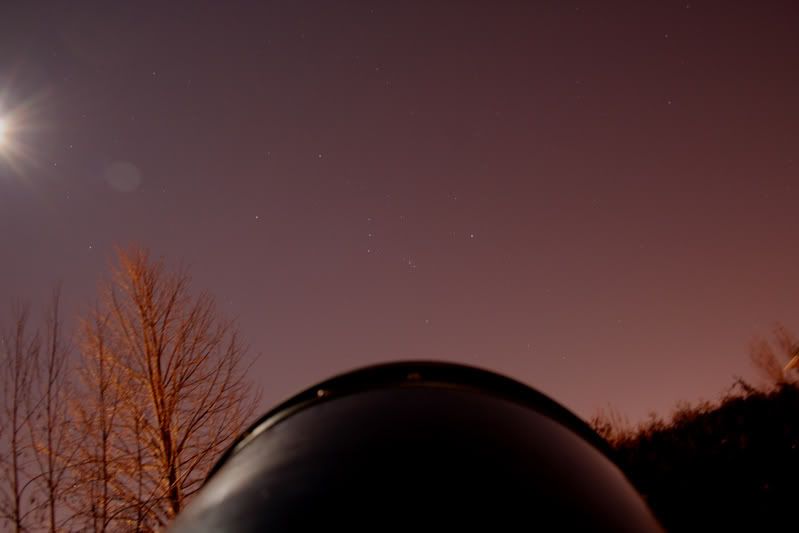
Another piggy back image of the constellation of orion. that bright light on the edge is the moon. Again I probably would have been able to capture alot more of the orion nebula if the moon wasn't washing out the sky with light!
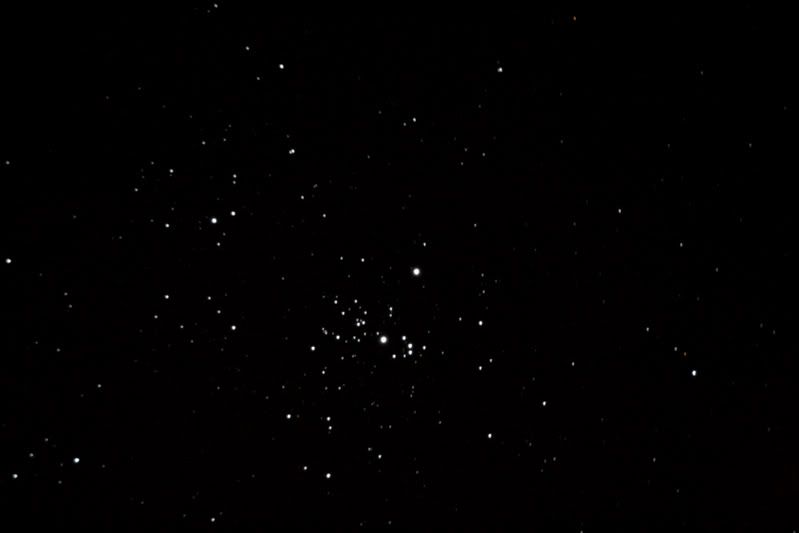
This is half of the great double cluster of perseus. This is just a single unstacked test image with my new DSLR. I was quite happy with it. this is a 30 second exposure at ISO1600 with my 10" LX200 SCT. I can't go much beyond this lengh of exposure with my 10" telescope due to the effects of feild rotation. This is because my telescope is a alt-az mount instead of an equitorial mount. Therefore I did not bother taking multiple images since stacking would be inposible due to field rotation. These results however give great promise for my 5" and 80mm telescopes which do have equitorial mounts and I can do much longer exposures of say 1 minute. Anything above that then trailing starts to occur unless I can guide the scope. I am itching to try deepsky shots on my 5" and 80mm scopes with my new DSLR. The deepsky shots with my canon G3 a couple of years ago sure priveded some great results so my new DSLR should provide MUCH better results!
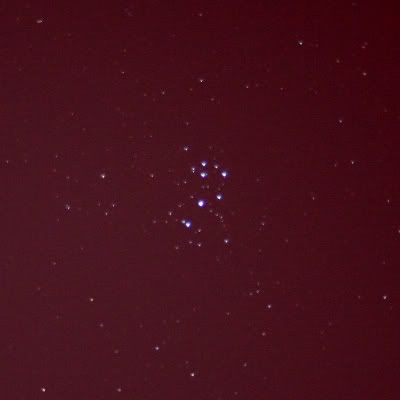
This is M45 taken with my cam piggy backed to the 10" telescope.
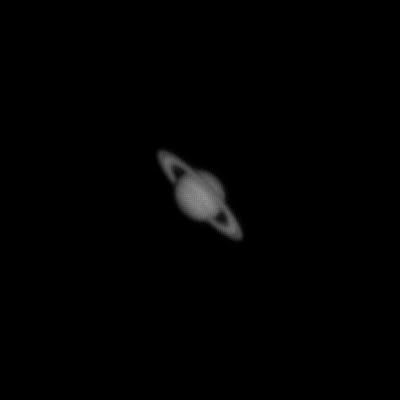
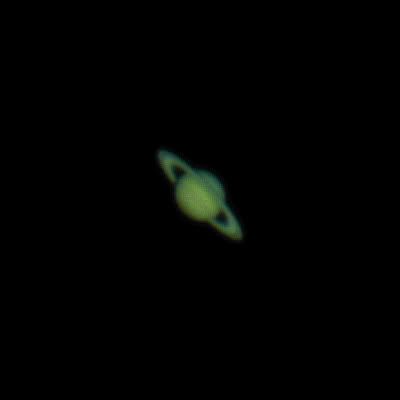
Two very quick and unimpresive saturn shots taken with my canon G3, 10" LX200 SCT, a 25mm plossal and a 2x Barlow. These shots don't compare to my best shots of saturn (see best of 2004).
This is an image of M31 (that tiny smudge near the center of the image. It was taken with my new digital SLR camera piggy backed to my 10" LX200 SCT. It was a 1 minute exposure at ISO800 ( i believe). It looks unimpressive because the full moon was out and the amount of light pollution was to the max. But as you can see I was still able to capture alot of stars and a little bit of the galaxy. I bet that if the moon was not there, I would be able to capture a heck of alot more stars as well as capture the faiter parts of the galaxy as I would have been able to take a much longer exposure then 1 minute. Anything above a minute with the bright moon, it got washed out!

Another piggy back image of the constellation of orion. that bright light on the edge is the moon. Again I probably would have been able to capture alot more of the orion nebula if the moon wasn't washing out the sky with light!

This is half of the great double cluster of perseus. This is just a single unstacked test image with my new DSLR. I was quite happy with it. this is a 30 second exposure at ISO1600 with my 10" LX200 SCT. I can't go much beyond this lengh of exposure with my 10" telescope due to the effects of feild rotation. This is because my telescope is a alt-az mount instead of an equitorial mount. Therefore I did not bother taking multiple images since stacking would be inposible due to field rotation. These results however give great promise for my 5" and 80mm telescopes which do have equitorial mounts and I can do much longer exposures of say 1 minute. Anything above that then trailing starts to occur unless I can guide the scope. I am itching to try deepsky shots on my 5" and 80mm scopes with my new DSLR. The deepsky shots with my canon G3 a couple of years ago sure priveded some great results so my new DSLR should provide MUCH better results!

This is M45 taken with my cam piggy backed to the 10" telescope.


Two very quick and unimpresive saturn shots taken with my canon G3, 10" LX200 SCT, a 25mm plossal and a 2x Barlow. These shots don't compare to my best shots of saturn (see best of 2004).



0 Comments:
Post a Comment
<< Home